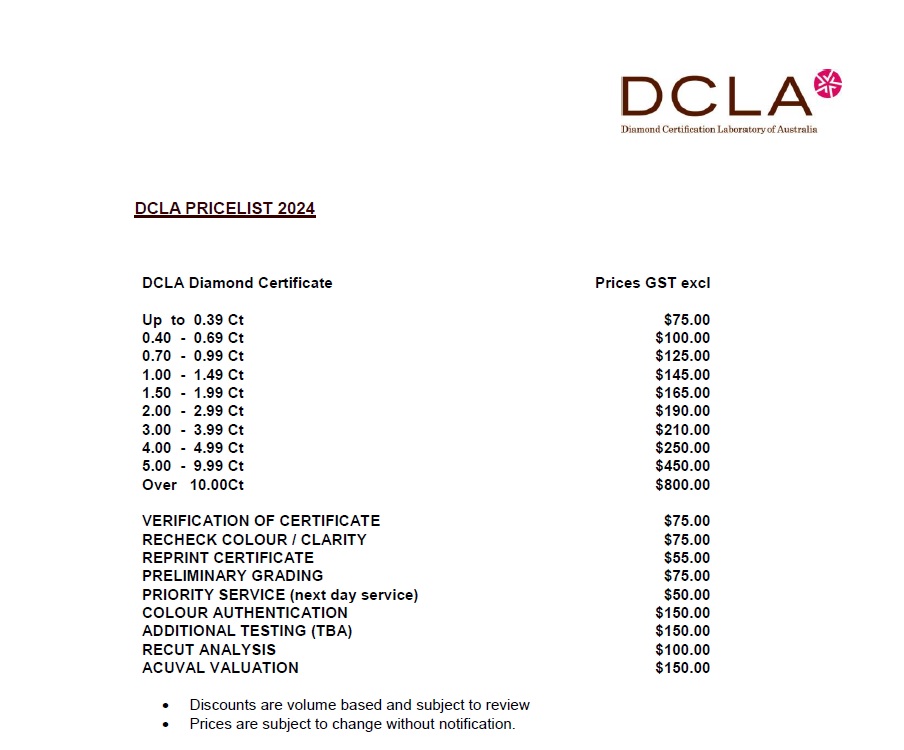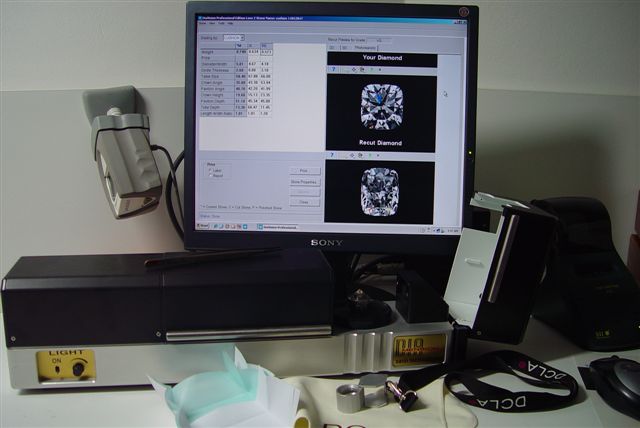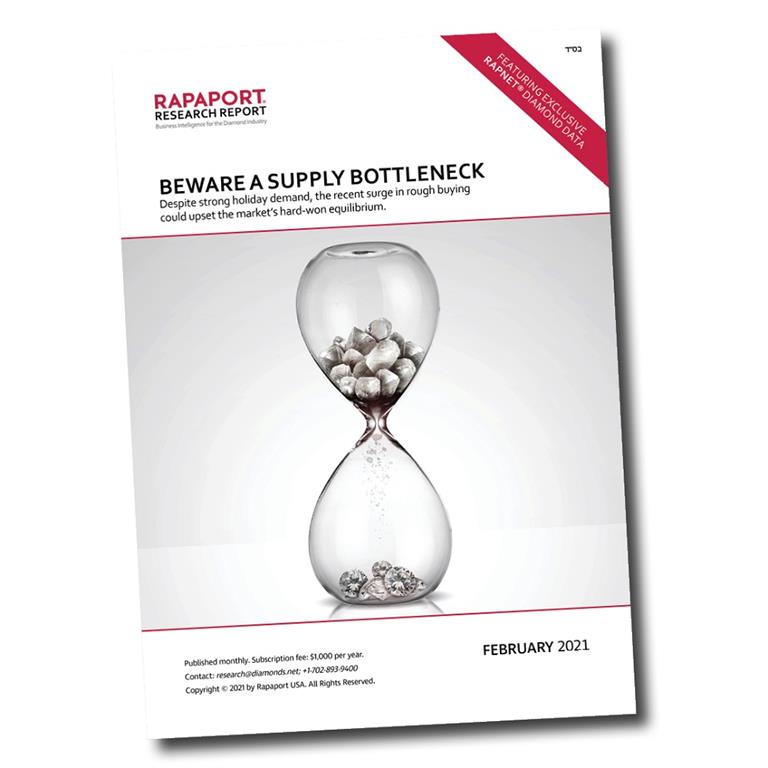DCLA gemological testing and diamond grading reports price list


DCLA gemological testing and diamond grading reports price list


Swiss watch exports fell 11% year on year to CHF 1.59 billion ($1.78 billion) in January, the 12th consecutive monthly drop, as demand slowed in the US and in key Asian markets.
Shipments to the US declined 11% to CHF 183.3 million ($204.5 million), partly because strong figures in January 2020 created an unfavorable comparison, the Federation of the Swiss Watch Industry said Thursday.
Supply to Hong Kong dipped 9% to CHF 169.3 million ($188.9 million) last month as market conditions deteriorated, while exports to the UK and Japan slumped due to the tightening of Covid-19 measures, it added. January also had one fewer business day than the same period a year earlier.
The negative figures outweighed a 58% jump in orders from China, for a total of CHF 255 million ($284.5 million), mirroring a continued recovery of the retail sector on the mainland.
Globally, cheaper watches saw a sharper downturn, with shipments of timepieces priced under CHF 200 ($223) sliding 31% by value. Exports of watches with wholesale prices ranging from CHF 200 to CHF 500 ($558) decreased 26%, while goods valued between CHF 500 and CHF 3,000 ($3,347) suffered a decline of 25%. Shipments of items above that price level slipped 4.1%.
The numbers point to a worsening of the situation versus December, when the global decline was the mildest since the start of the pandemic as Chinese demand rose. The trade hasn’t witnessed a year-on-year increase since January 2020.
“The result for the month will nonetheless have only a limited effect on the upward trend seen since last summer, and a return to significant growth is expected over the next few months,” the federation noted.
Source: Diamonds.net
Prices of fancy-color diamonds slipped marginally in the fourth quarter of 2020 as stability in the yellow category helped the sector stave off a heavier slump, according to the Fancy Color Research Foundation (FCRF).
“Although 2020 was challenging in terms of logistics and travel, contrary to market expectations, fancy-color diamond prices proved to be resilient, with minor price decreases across the board,” the FCRF said Monday.
The organization’s Fancy Color Diamond Index for yellows inched down 0.3% year on year in the three months ending December 31, while prices for blues fell 1.3%. Pink fancy-color diamonds decreased 0.9%, with the overall index slipping 0.8%.
The 1.50- and 5-carat categories were the strongest for fancy blues, increasing 0.5% versus the previous quarter, while fancy-vivid blues decreased 0.6%, led by soft prices for 1-carat stones in that category. Pinks stayed mainly flat compared to the third quarter, with 2-carat fancy pinks seeing the highest rise, up 1.4%. In yellows, the fancy-intense, 5-carat segment grew 0.8%, and the price for fancy-vivid, 3-carat stones was up 0.7%. Fancy-yellow, 1.50-carat diamonds increased 0.6% during the period.
The FCRF believes prices of yellows will continue to remain strong throughout 2021.
“2020 was a fascinating year; wholesalers and retailers alike had to overcome many logistical hurdles in order to finalize simple transactions, while demand for fancy-color diamonds was solid,” said FCRF advisory board member Eden Rachminov. “I expect 2021 to be a bullish year for yellows; their current price is relatively low and I think that a price increase is inevitable.”
The index tracks prices of yellow, pink and blue fancy-color diamonds in Hong Kong, New York, Geneva and Tel Aviv.
Source: Diamonds.net
A 23.58-carat diamond ring was the top lot at Christie’s Jewels Online sale, fetching well above its high estimate.
The piece, which featured a cut-cornered rectangular modified brilliant-cut, fancy-yellow, SI1-clarity stone, bracketed by two triangular-cut diamonds, brought in $325,000 against its $300,000 upper estimate, Christie’s said Wednesday. In total, the auction running from January 27 to February 10 garnered $2.7 million, with 98% of the items on offer finding buyers.
Two diamond rings sold for $81,250 each, just above their high valuations. One contained a round, 4.18-carat, F-color, VS2-clarity diamond. The other was set with an emerald-cut, 3.56-carat, D-color, internally flawless, type IIa diamond, flanked by two smaller emerald-cut and two triangular-cut diamonds. A diamond medallion necklace by Graff, bearing a total weight of 35.38 carats, also realized $81,250, within estimates.
A number of Graff diamond and gemstone jewels were sold without reserve at the auction. Those included a pair of emerald and diamond earrings, which brought in $40,000, beating estimates, and a ruby and diamond ring, which smashed its high valuation, fetching $32,500.
Meanwhile, a pair of aluminum Violet earrings by designer JAR garnered $13,750, more than four times their upper estimate.
Source: Diamonds.net
In celebration of the natural beauty of the countries from which its diamonds are produced, De Beers Jewellers has introduced Reflections of Nature, the venerable house’s latest collection in the stratospheric world of high jewelry.
The dazzling collection features five sets Okavango Grace, Motlatse Marvel, Namib Wonder, Landers Radiance and Ellesmere Treasure with a total of 39 exclusive pieces.
The latter is probably the most unexpected as few laymen would recognize Canada as a source for diamonds. Yet, Ellesmere Island in the Canadian Arctic is the third largest producer of diamonds in the world.
The pieces in this DeBeers set were designed to reflect the island’s glacial beauty and are evocative of the ice and frosted flora of Ellesmere Island, where diamonds were first discovered in 1991. While colored stones are employed throughout the other Reflections of Nature sets, the Ellesmere Treasures are indeed treasures with their all white diamonds.
A UNESCO World Heritage Site, the Okavango Delta in Botswana is inspiration for De Beers’ Okavango Grace set. Recalling the lush wetlands and the fluidity of the delta’s reeds, the set features a color scheme of rough pink, green, brownish pink, purple and grey diamonds suspended in organic strands that move freely with the wearer.
Design of the Namib Wonder set is based on the beauty of the world’s oldest and largest sand dunes found in Namibia’s Namib Desert. Brilliant white and yellow diamonds set the stage for white rough diamonds, which are cap-set allowing them to move more freely and catch the light from every angle.

The spectacular sunrises and sunsets over the peaks and caverns of Motlatse Canyon in South Africa provide the creative cue for the colorful Motlatse Marvel set. Pink, yellow and white diamonds conjure bejeweled sunbursts.
The teaming underwater universe of South Africa’s Landers Reef is suggested in the Landers Radiance multi-colored, multi-cut theme. “A rainbow of white and fancy color diamonds evokes the vibrant colors of corals and fish, shimmering in sunlit waters” is how De Beers’ promotional materials describe this set.
With introduction of the collection, De Beers Jewellers is reaffirming its commitment to environmental conservation through its widespread Building Forever sustainability initiative and the houses’s commitment to its code of best practices principles. That includes conservation of “The Diamond Route,” some 50,000 acres throughout Southern Africa.
Source: papercitymag
The positive sentiment the diamond market experienced during the past few months was a welcome change from the gloomy tone that characterized 2020. Buoyed by holiday sales that proved better than expected, the trade gained the confidence to buy again, even with activity limited mostly to online platforms.

For the first time in many years, polished suppliers struggled to fill orders due to shortages during the fourth quarter. Just a year earlier, the midstream was plagued by what seemed to be a chronic oversupply that pushed down polished prices and caused profit margins to tighten. Among the few benefits of the Covid-19 lockdowns was that manufacturers were forced to freeze rough purchases, stop production, and start depleting the excess inventory they had.
With fewer goods available, it was understandable that the rough market would wake up again in the fourth quarter. The resurgence was a remarkable one, too: The combined volume of De Beers’ and Alrosa’s rough sales rose 57% year on year to 23.9 million carats in the final three months of the year. That’s more carats in a quarter than the two have sold since the beginning of 2017 — itself an anomaly period that arguably fueled the ensuing oversupply crisis.
The positive momentum continued into the new year with reports of sizable rough sales last month. De Beers notched its largest sight in three years, while Petra Diamonds and Mountain Province continued to see good demand at their tender sales, with prices up 8%.
In the February issue of the Rapaport Research Report, we consider the question of whether the strong rough sales are a product of polished demand or of the low supply that typified the market earlier in 2020. It could be both. What’s certain is that the rough market must cool in the coming months or risk throwing the industry back into a polished-oversupply scenario.
Such an event would undo the hard work that went into restoring an equilibrium between the rough and polished markets. It would also fuel skepticism about the stated intention — by miners, manufacturers and retailers alike — of ensuring the diamond market becomes demand driven and more efficient in its operations.
Now, at the start of February 2021, the industry is at a crossroads. Manufacturers must curb their rough purchases to maintain the balance we’ve achieved in recent months and ensure a sustainable recovery. While the holiday season was relatively positive for the industry, global diamond jewelry sales have not yet returned to pre-pandemic levels and are unlikely to do so this year. For now, this means the recovery remains a supply-driven one, and the industry needs to walk the fine line between caution and its enthusiasm to do business again.
Source: Diamonds.net
De Beers’ rough-diamond sales soared to $650 million in January, its highest for any month since 2018, as manufacturers replenished inventory following the holiday season.
The total was 18% more than the $551 million the miner garnered a year earlier, and 44% above the $452 million it reported in December, De Beers said Wednesday. This was despite the company implementing a sharp increase in rough prices.
“With the midstream starting the year with low levels of rough and polished inventories, and following strong sales of diamond jewelry over the key holiday season in the US, we saw good demand for rough diamonds at the first cycle of the year as midstream customers sought to restock and to fill orders from retail businesses,” said De Beers CEO Bruce Cleaver. “Sales of rough diamonds are also being supported by expected demand ahead of Chinese New Year and Valentine’s Day.”
De Beers held the sight in its usual Botswana location, in addition to viewings in Antwerp and Dubai, as the Covid-19 pandemic has prevented many customers from traveling overseas. Its revenue figure encompasses sales that took place between January 18 and February 2, including the sight and auctions.
The January sight is usually one of the biggest of the year, especially after a positive holiday season. Even so, this year’s opening sale of the year exceeded all monthly sales going back to January 2018, when revenues came to $672 million.
De Beers raised prices by 4% to 5% at the sight in response to the improving balance between supply and demand, as reported last month by Rapaport News. Alrosa lifted its prices by 6% to 7%, with the Russian miner scheduled to publish its January sales value on February 10.
Source: Diamonds.net
Lucapa Diamond Company and its partners have announced the results of the first diamond sale of 2021 by Sociedade Mineria Do Lulo (SML) from its Lulo alluvial mine in Angola.
The rough diamond parcel of 4,273 carats was sold for a total of US$5.9 million (A$7.7 million) or US$1,375 (A$1,793) per carat.
Lucapa MD, Stephen Wetherall comments: “As with the first sale of Mothae diamonds in 2021, prices achieved by SML at this sale continued to reflect the positive industry mood, and with sales from both operations in 2021 already totalling A$15 million, it has been a solid start to the year.”
Source: miningreview
A million rough diamonds seized in raids by the Indian tax authorities on the scanning firm Diyora & Bhanderi are to be returned to their owners.
The company is being investigated over claims of tax evasion and the illegal sale of diamond scanning machines. Its premises in Surat were raided 10 days ago.
Gems belonging to over 800 diamond firms, which had been sent to Diyora & Bhanderi Corporation (DBC) for rough scanning, were seized, along with large quantities of cash.
The Surat income tax authorities responded on Friday to representations by the Southern Gujarat Chamber of Commerce and Industry that diamantaires should have their gems returned, as long as they can provide the proper paperwork.
Meanwhile, Sarine, the Israel-based diamond tech firm, accuses DBC of copying the industry-standard Galaxy inclusion mapping software used by its rough diamond scanning machines and is taking action through the High Court of Gujarat, in Ahmedabad.
Source: IDEX Online
The Gemological Institute of America (GIA) has uncovered three synthetic moissanites with forged inscriptions that fraudsters had used to misrepresent them as natural diamonds.

The cases at the Johannesburg laboratory marked the first times the GIA had discovered fake girdle inscriptions on diamond simulants, it said in a recent article in its academic journal, Gems & Gemology.
The lab initially received a round brilliant, 1.02-carat stone for a diamond-grading report. The report number on the girdle was for an E-color natural diamond with the same weight that was graded in 2019, but the dimensions were different because moissanite has lower specific gravity, meaning that it weighs less relative to its volume.
Standard testing showed the stone was not a diamond, while subsequent spectroscopic and gemological analysis proved it was synthetic moissanite, GIA researchers wrote in the fall 2020 edition of Gems & Gemology, which it released last week.
“The possibility exists that a consumer could purchase this simulant thinking it was a natural diamond, especially with a deliberately misleading inscription,” wrote Sicebiso Hlatshwayo, a supervisor of diamond grading at the GIA in Johannesburg, and Sally Eaton-Magaña, senior manager of diamond identification at the GIA in Carlsbad, California.
Since writing the article about the first stone, the same lab in South Africa received and identified two more synthetic moissanites with fraudulent inscriptions, the GIA added in a note.
In addition to the size discrepancy, the first stone’s clarity was equivalent to VVS2 (the GIA doesn’t usually give moissanite a grade of this type), whereas the diamond it was impersonating was VVS1. The inscription’s font was also distinctly different from the GIA’s standard one. The GIA obscured the fraudulent inscription, in line with its usual practice.
People sometimes mistake synthetic moissanite for diamond because some of their properties are similar, such as their hardness and thermal conductivity, the gemologists explained. The latter feature is often a method of distinguishing diamonds from simulant, but it can fail if the stone is moissanite.
However, the stone showed “double refraction” — a feature of moissanite, absent in diamonds, that gives it more brilliance.
Another key difference between the materials is dispersion, the GIA pointed out. Moissanite has higher dispersion, meaning light that enters the stone is refracted more. The eye, therefore, sees a more distinct range of colors, giving it more “fire” than diamonds.
Source: Diamonds.net